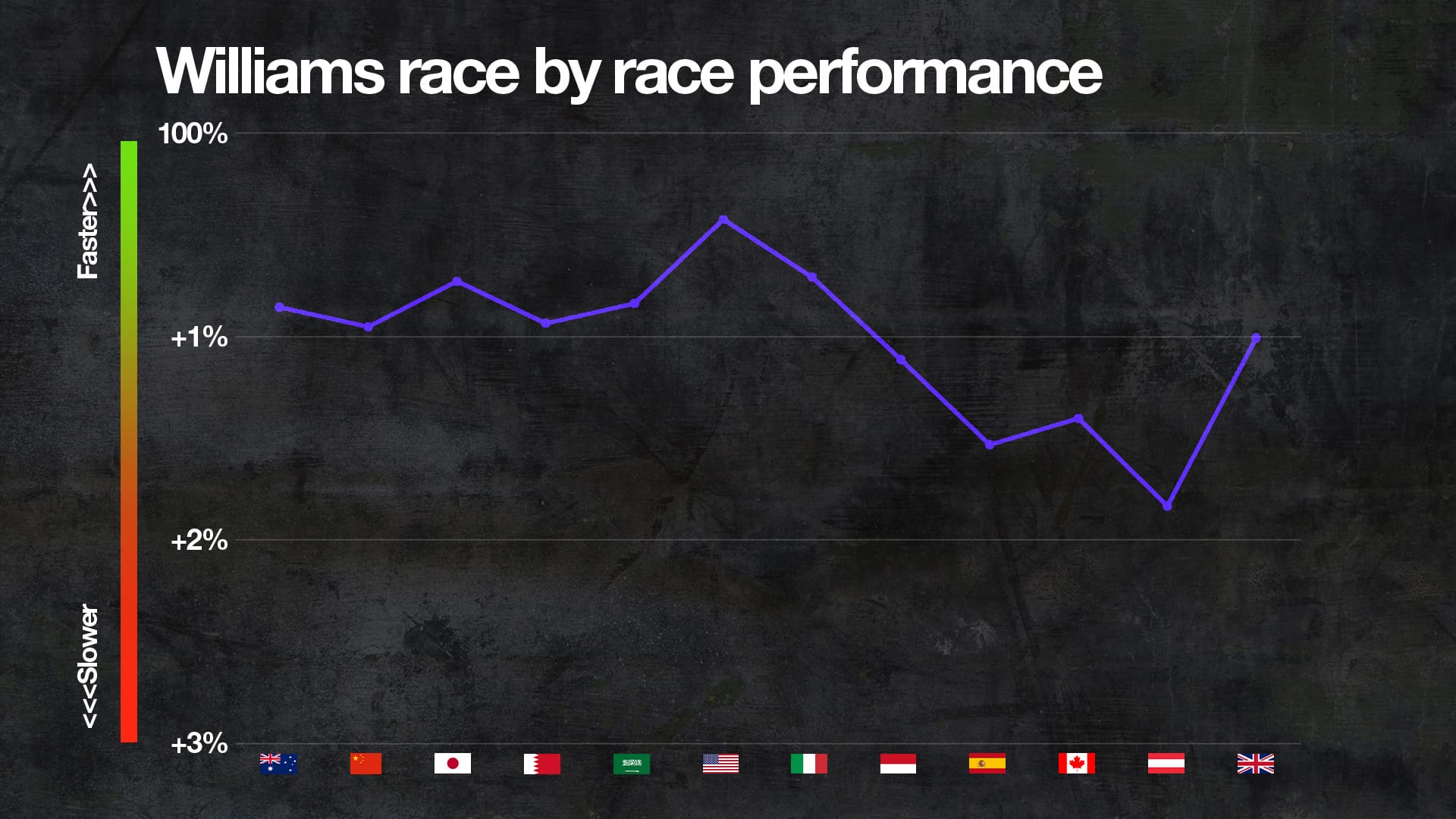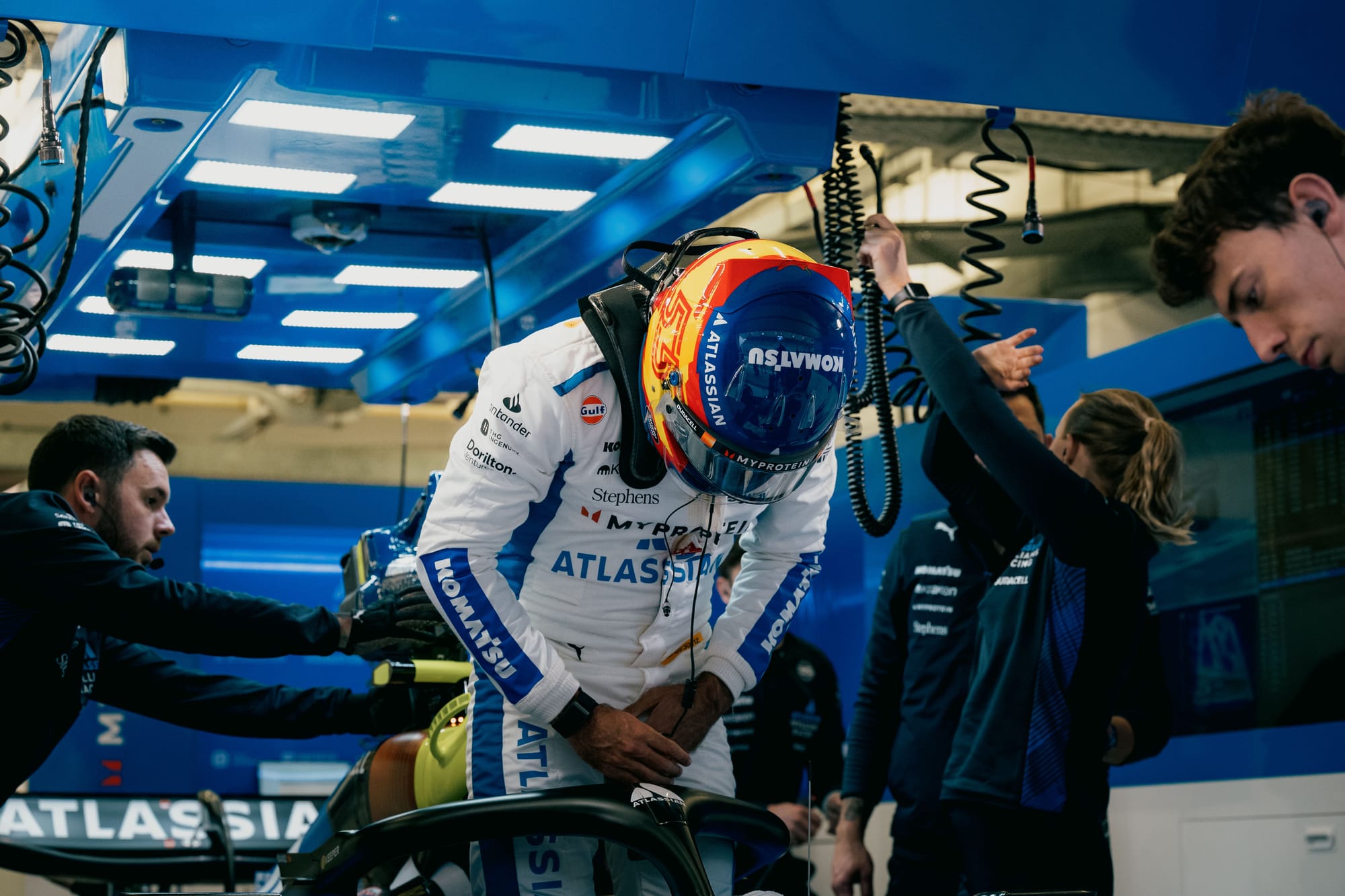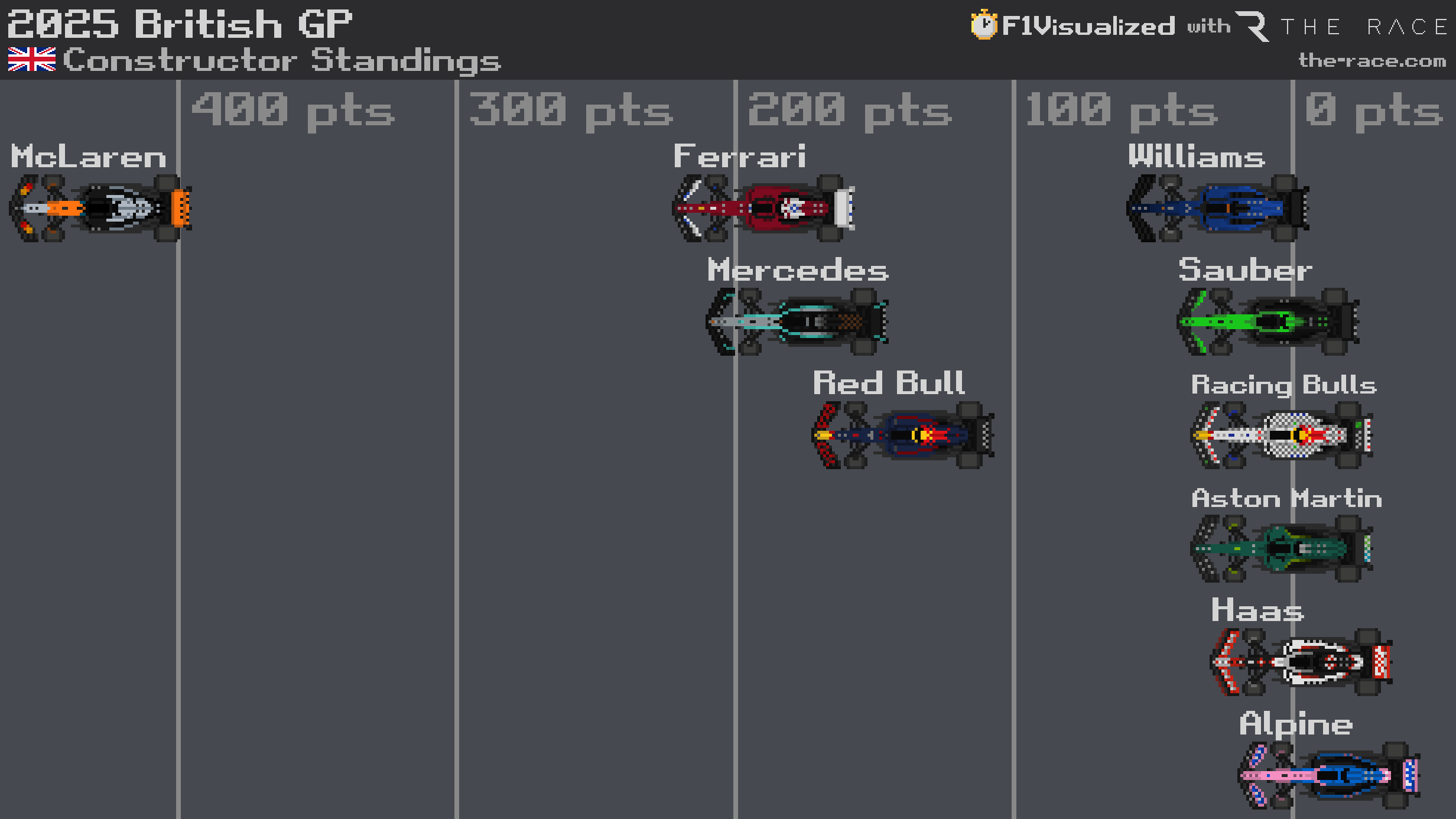As the prolific early-season Williams form has turned to dust in recent Formula 1 races, a trend has emerged offering a tempting potential answer for why.
In the first eight races of 2025, Williams scored 54 points, more than double the next best team in the midfield. Pace-wise it had the fifth-fastest car on average in that time, hovering around 100.7-100.9% of the pole time in qualifying. Alex Albon was in Q3 six times, Carlos Sainz five.
In the four races since it has added just five points, the lowest tally of anybody but Haas (which has managed only three points but should have more after missing a big opportunity at the British Grand Prix). And Williams's pace relative to the front has worsened to a qualifying deficit ranging from 101.0-101.8%. Albon's managed to get into Q3 just once, Sainz has not done so at all.

The shift in pace and points returns coincided with the Spanish Grand Prix and the introduction of a flexi-wing clampdown that meant every team needed to beef up their front wings at least a little. Correlation does not imply causation…but if one wanted to identify a single cause for the Williams drop-off, one potentially need not look too hard.
Things are a little messier in reality, though. The flexi-wing change might be a factor but several other factors complicate the picture.
Williams has been weaker relative to its opposition, and therefore come under more pressure from below, but it has still been competitive. And having overachieved in the first part of the year it's been underachieving recently due to a mix of strategic missteps and reliability problems.
Sometimes it has not maximised qualifying because of tyre preparation, or suffered on Sundays with things like brake cooling issues in Canada and Austria or an internal Williams cooling problem that caused back-to-back retirements for Albon in the same races.
And both drivers feel that various parts of the Williams system are being stress tested more now that the car is more competitive.
"Our car is getting faster and faster and we need to make sure that we use it," said Albon.
"We're obviously falling down a little bit in terms of the updates and upgrades from other cars, but we still should have a car that's in Q3, or possibly two. And in many ways we feel like we let ourselves down.
"We're always improving, we're always analysing. We're some of the most self-critical [people in F1], focusing on ourselves and really trying to improve these areas.
"In that sense I know we're going to get there, it's just that the last couple of weeks highlight that there's still some areas to improve."
Sainz has admitted Williams's car performance has exceeded his expectations of what the team could do immediately in 2025, to the point where he believes its two drivers could be as high as seventh and eighth in the championship and "pulling away" from the midfield.

But he reckons Williams isn't ready as a team to hit that level yet.
"As a team, a more competitive car is, for sure, stressing a bit the system of the way we do things and the way we work," said Sainz.
"And having a car that this year we've been able even to fight at times Red Bull, Mercedes, even Ferrari, has exposed not only our reliability issues, but also the way we look at strategy, the way we look at Q1s and Q2s, and the way we execute the weekend.
"It's giving us a great opportunity to actually learn a lot of the things we might learn next year with a more competitive car. But thanks to this much more competitive car this year, that's already given us a bit of a heads up on everything that we need to improve, on the margin of improvement that we have in so many areas if we want to fight the guys at the top.
"It's been a great test for the team. It's been a painful one, because you see a car that can get points almost every weekend, and we keep finding different little things that don't allow us to maybe get all the points that we see we could get.
"But it's the trajectory and the path that we are on. We're stressing the system to know exactly where we need to get together to be championship level."

The resulting swing has put Williams's fifth place in the constructors' championship at risk much sooner than expected even with the knowledge it had stopped developing the 2025 car very early and focused on the new 2026 rules. Sauber is now just 18 points behind and has outscored Williams by 30 points in the last four events; Aston Martin and Racing Bulls are only five points further back.
There is one final Williams upgrade coming which should help, although Sainz has cautioned that it was "developed a long time ago" and is not based on "feedback from testing and the first few races". That suggests it has been working its way through the Williams development loop quite slowly, but the drivers are enthusiastic.
"We are not just not going to keep falling back for sure," Sainz said. And Albon added: "We want one sooner rather than later. It will come on the car. Hopefully when it does, we can get back to where we were."
If that upgrade does help, and there is no reason to think it will not, it is still unclear whether Williams can recover its early 2025 peak.

That success might have overrepresented its true level. The team had a clearer path to the front of the midfield, some bigger teams were finding their feet too slowly, so it was easier to run clean races and even pick off some big hitters.
But as the field has condensed more, Williams is caught in the pack. Weaknesses are always more ruthlessly exposed when that happens and there are times where Williams seems to have caught up more quickly with its raw car performance than it has with other areas of operation.
If so, the question for the rest of 2025 is perhaps less whether Williams can regain an edge - but whether it can get on top of the fragilities now being revealed.



